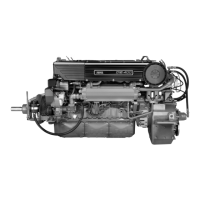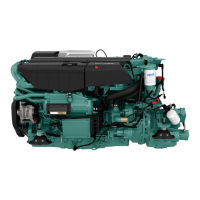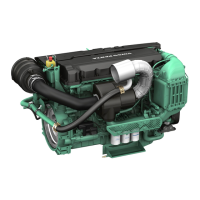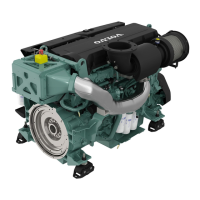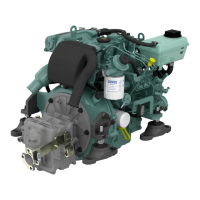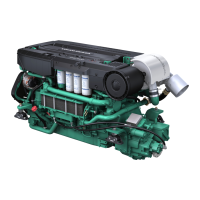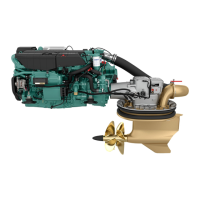34
In case of emergency
Despite regular maintenance according to the maintenance schedule and perfect operation, it may occur that a
fault occurs which must be attended to before the boat can travel further. This chapter contains tips for rectifying
some of the possible faults.
There are safety functions which are activated when certain faults occur, to protect the engine. The following can
occur:
● Engine can not be started
● Reversing gear in neutral and engine speed is limited to 1000-1200 rpm, depending on engine.
● The engine stops
Flash out any fault codes and take the recommended measures. Please refer to the “Diagnostic function” and
“Fault codes” chapters.
1. Check that the rated voltage of the help start
battery is the same as the system voltage of the
engine.
2. Connect the red jumper cable to the positive pole
(+) of the flat battery, and then to the positive pole
of the help start battery.
3. Connect the black jumper cable to the negative
pole (–) of the help start battery, and then to a
place some distance from the flat batteries, such
as the negative connection on the starter motor.
WARNING! Under no circumstances may the
black jumper cable (–) come into contact with the
positive connection on the starter motor.
4. Start the engine and run at a fast idle for about
ten minutes to charge the batteries.
WARNING! Working with, or going close to a
running engine is a safety risk. Watch out for
rotating components and hot surfaces.
WARNING! Do not touch the connections during
the start attempt: Risk of arcing. Do not stand
bending over any of the batteries either.
5. Stop the engine. Remove the jumper cables in the
exact reverse order from installation.
Starting with auxiliary batteries
WARNING! Ventilate well. Batteries contain and
give off an explosive gas which is highly
flammable and explosive. A short circuit, open
flame or spark could cause a violent explosion.
WARNING! Never confuse the positive and
negative poles on the batteries. Risk of arcing
and explosion.

